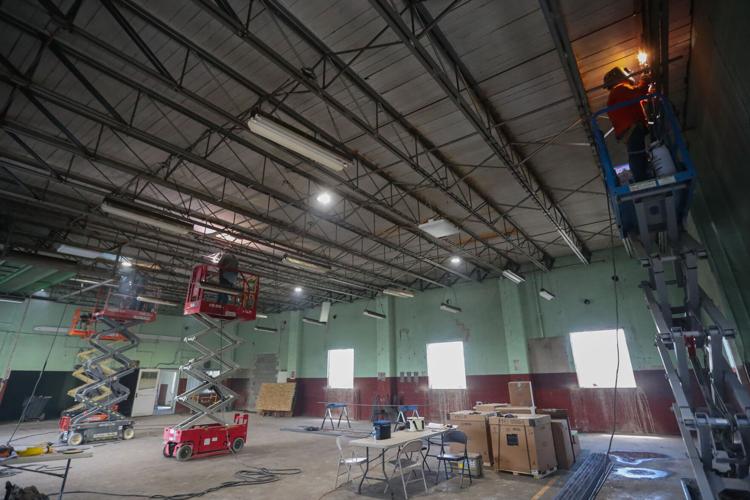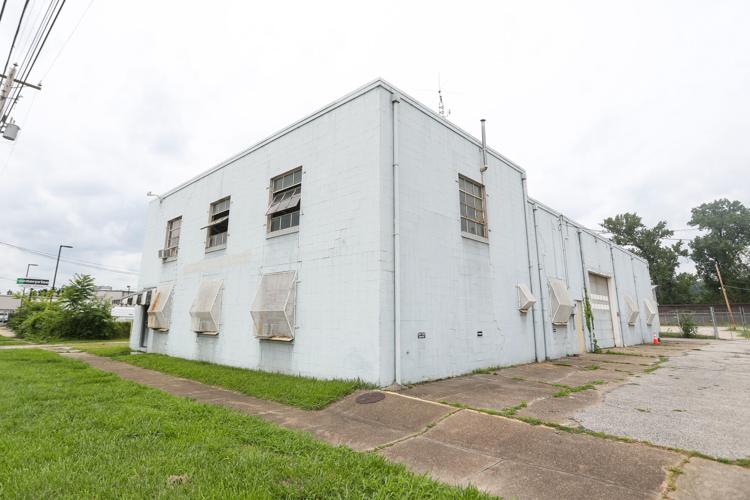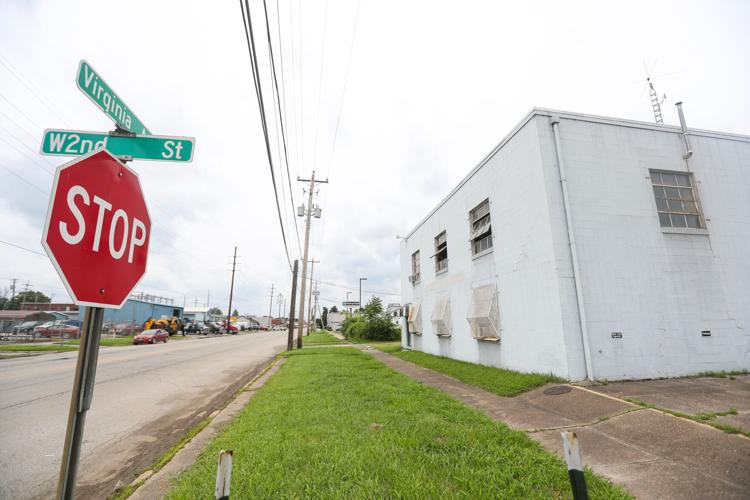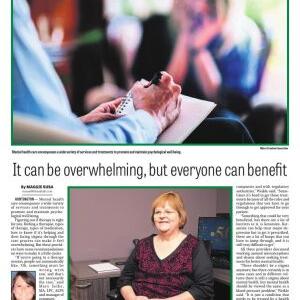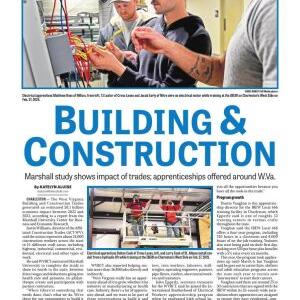HUNTINGTON ����ɫ��Ƭ� Gina Turner was homeless for about 10 years. Within a month of being in Huntington, she was housed.
When she first arrived in the city, Turner slept on a friend����ɫ��Ƭ�s couch before exploring resources through Volunteers of America and Veterans Homeless Resource Center that eventually got her housed. Turner is now a Marshall University student studying social work.
����ɫ��Ƭ�I����ɫ��Ƭ�m luckier than most because I����ɫ��Ƭ�m a veteran; there are more intense services for veterans,����ɫ��Ƭ� Turner said in April. ����ɫ��Ƭ�I think everybody deserves the same treatment. We����ɫ��Ƭ�re all humans.����ɫ��Ƭ�
While Turner said she was fortunate there are more aggressive programs out there for veterans, she said she was truly lucky because Huntington has the services to help.
Turner was one of more than 50 people who attended and spoke at public meetings regarding the city����ɫ��Ƭ�s Fiscal Year 2026 budget, opposing the potential shutdown of the Huntington City Mission����ɫ��Ƭ�s emergency shelter.
����ɫ��Ƭ�I����ɫ��Ƭ�ve been homeless, and I know how well rapid rehousing programs work, how well housing first programs work and understanding Maslow����ɫ��Ƭ�s hierarchy of needs ����ɫ��Ƭ� you can����ɫ��Ƭ�t fix any other problems until you fix the ones at the bottom,����ɫ��Ƭ� Turner said. ����ɫ��Ƭ�You got to have housing, you got to have shelter, you got to have food or it����ɫ��Ƭ�s going to affect your mental health; it����ɫ��Ƭ�s gonna affect every part of you.����ɫ��Ƭ�
A low-barrier shelter is a homeless shelter that aims to be accessible and inclusive by reducing obstacles to entry. Clients do not meet the requirements the Huntington City Mission, the city����ɫ��Ƭ�s night shelter, or choose not to go into the Mission for another reason.
Low-barrier shelters follow the ����ɫ��Ƭ�housing first����ɫ��Ƭ� model, which is research-based and evidence-backed, said Huntington City Councilwoman Holly Smith Mount, vice chair of the Harmony House board and a nurse.
The ����ɫ��Ƭ�housing first����ɫ��Ƭ� model provides a direct pathway into permanent housing by removing requirements such as first obtaining sobriety, employment, program participation or citizenship.
The Mission has run low-barrier emergency services out of its chapel since 2020. It was in the process of constructing its own low-barrier shelter, for which it broke ground in November 2024.
Huntington Mayor Patrick Farrell announced plans for The Hub, in the West End, in April, after campaigning on a promise to move homeless services out of the city����ɫ��Ƭ�s central business district.
����ɫ��Ƭ�This is a beginning����ɫ��Ƭ�
For The Hub, the city will partner with Valley Health Systems, the Cabell-Huntington Health Department, Prestera Health Services, Harmony House and Marshall Health Network.
����ɫ��Ƭ�A lot of shelters that currently exist have certain guidelines and restrictions, and we����ɫ��Ƭ�re meeting people where they����ɫ��Ƭ�re at to offer them the opportunity to come in, whether it����ɫ��Ƭ�s for one night, whether it����ɫ��Ƭ�s for multiple nights,����ɫ��Ƭ� said Brett Wellman, chief community health officer of Valley Health. ����ɫ��Ƭ�This is not an end spot. This is a beginning.����ɫ��Ƭ�
The Hub will be in a former Public Works Department building at 96 W. 3rd Ave. It will be led and staffed by Valley Health.
The Hub will evolve through phases. Phase one includes meeting basic needs such as shelter, providing clients with a clean place to take a shower, get a hot meal and a safe place to sleep overnight, Wellman said. Phase two should start in 2026 and will start to add additional services.
Phase two includes renovation to part of the building for case management and health care services, Wellman said. Valley Health and partners will also have medical services on site. Comprehensive services that will be offered will include primary care, acute sick care, infectious disease and behavioral health, he said.
����ɫ��Ƭ�When there is a higher priority or more acute need, then we����ɫ��Ƭ�ll arrange the transportation to get them to one of our partners ����ɫ��Ƭ� whether it be a cancer diagnosis or pneumonia that they need admitted for, then we����ɫ��Ƭ�ll partner for transportation,����ɫ��Ƭ� Wellman said.
The areas that will be utilized in the second phase will be renovated at a later date and closed off when The Hub is officially open. It will be on the other side of the building and the upstairs area. Phase two includes an exam room that has the same appeal and look as going to a primary care office, Wellman said.
Valley Health hired Neighborgall Construction as the main contractors for the project; however, Wellman said he could not give an estimate on how much the overall cost of renovation will be.
Subcontractors were on site Wednesday doing welding work. Contractors started work two weeks ago and hope to get the welding finished in little over three weeks, he said.
Current work includes utility upgrades, making sure the building is up to code and adding showers and restrooms. Wellman said bunk beds will need to be purchased. Heating, ventilation and air conditioning (HVAC) work needs to be done.
Wellman said the building has been checked for asbestos ����ɫ��Ƭ� two rooms had old asbestos flooring; however, it was abated. Lockers will be constructed outside for people to store their belongings.
The Hub will be a blend of the services provided in downtown Huntington, such as Harmony House����ɫ��Ƭ�s day services and the Huntington City Mission����ɫ��Ƭ�s night services, Wellman said, making them streamlined, accessible and successful.
����ɫ��Ƭ�The goal we have with the low-barrier shelter is to put ourself out of business, to be honest. Our goal is if we do this right, then we should see a decrease in demand over time because we����ɫ��Ƭ�re getting people cared for,����ɫ��Ƭ� he said. ����ɫ��Ƭ�We����ɫ��Ƭ�re getting them into either temporary shelter with that transition plan to permanent housing.����ɫ��Ƭ�
Wellman said he hopes the Hub will be open around the beginning of November.
Battling a housing crisis and red tape
The Hub represents an innovative approach to serving people experiencing homelessness, said Sydnee McElroy, Harmony House medical director and family physician at Valley Health, in an email response in May.
����ɫ��Ƭ�Centralizing these services makes it easier for our neighbors to access them, which we really hope will improve their quality of life as they work towards becoming rehoused.����ɫ��Ƭ�
Multiple providers under one roof should also help improve communication and eliminate a lot of redundant red tape, she said.
The low-barrier shelter having wraparound services in one place is an important step in getting people the help they need, Mount said.
����ɫ��Ƭ�The more you ask folks of that population to make different stops, the less likely they are to do it because they����ɫ��Ƭ�re on foot or on bike, or they just ����ɫ��Ƭ� their life is hard, so (I) certainly want to see this facility succeed and provide all these services,����ɫ��Ƭ� Mount said.
After talking to an unsheltered person recently, Mount said he only stayed at the chapel����ɫ��Ƭ�s emergency night shelter half the time due to its limited space. On the coldest nights, the shelter could have as many as 80 people.
The person told Mount that if someone gets up to go to the bathroom, someone else will take their spot. The chapel has one bathroom. He also said he would sleep with his arms wrapped around his belongings because people would take them, Mount said.
The Hub is expected to have 70-80 beds, Mount said. Harmony House is involved in the project as a consultant, as it cannot financially staff it right now; however, Mount said it could become more involved. The vision would be for the Hub to be the low-barrier day and night shelter, she said.
����ɫ��Ƭ�This Hub would take over those day and night shelter needs around the clock,����ɫ��Ƭ� Mount said.
Mount said Huntington does not have the stock in housing it needs.
����ɫ��Ƭ�We have a housing crisis,����ɫ��Ƭ� Mount said.
After her own experience with homelessness, Turner said she hopes The Hub will have transitional services, financial literacy, resume building classes, interviewing classes, GED classes and parenting classes.
����ɫ��Ƭ�People shouldn����ɫ��Ƭ�t have to blow in a breathalyzer to have a place to sleep,����ɫ��Ƭ� she said. ����ɫ��Ƭ�People shouldn����ɫ��Ƭ�t have to test clean from drugs to be able to sleep somewhere, people shouldn����ɫ��Ƭ�t have to take mental health medication to be able to get somewhere to sleep at night, to get a roof over their head for the night,����ɫ��Ƭ� Turner said. ����ɫ��Ƭ�We all deserve housing we all deserve food ... we shouldn����ɫ��Ƭ�t have to earn those things.����ɫ��Ƭ�
Valley Health����ɫ��Ƭ�s involvement
When Farrell approached Valley Health with his vision for the low-barrier shelter, its vice president of health affairs and chief medical Officer, Dr. Matthew Christiansen, said he saw it as both an opportunity to make a meaningful difference, and an obligation to lead with compassion and action.
����ɫ��Ƭ�Good health requires not only access to health care, but also to safety, shelter, nutritious food, and more, and we feel that this collaborative effort provides an opportunity to make a true impact on the health of the individuals served and the larger community,����ɫ��Ƭ� Christiansen said. ����ɫ��Ƭ�When we care for the most vulnerable, we uplift the entire community. That����ɫ��Ƭ�s why we����ɫ��Ƭ�re proud to stand at the front lines of this effort.����ɫ��Ƭ�
Valley Health will be the lead partner in the launch and sustaining of The Hub. It will provide direct access to critical health services ����ɫ��Ƭ� primary care, infectious disease, wound care, substance use disorder treatment ����ɫ��Ƭ� as it is currently doing at Harmony House. In addition, it will ����ɫ��Ƭ�coordinate a unified system of care����ɫ��Ƭ� by bringing together professionals from other organizations, such as Marshall Health Network, Prestera, the Cabell-Huntington Health Department and Ohio Valley Physicians, he said.
����ɫ��Ƭ�We are acting as the convener ����ɫ��Ƭ� not just providing care, but building the coalition needed to make the low-barrier shelter a true center of healing,����ɫ��Ƭ� Christiansen said.
Christiansen said plans have not been finalized on how food and transportation will be handled. It also will start as a night shelter and expand hours over time.
����ɫ��Ƭ�We are hopeful as the phases progress to more fully integrate The Hub with Harmony House operations to provide full 24/7 access to services for clients,����ɫ��Ƭ� Christiansen said.

